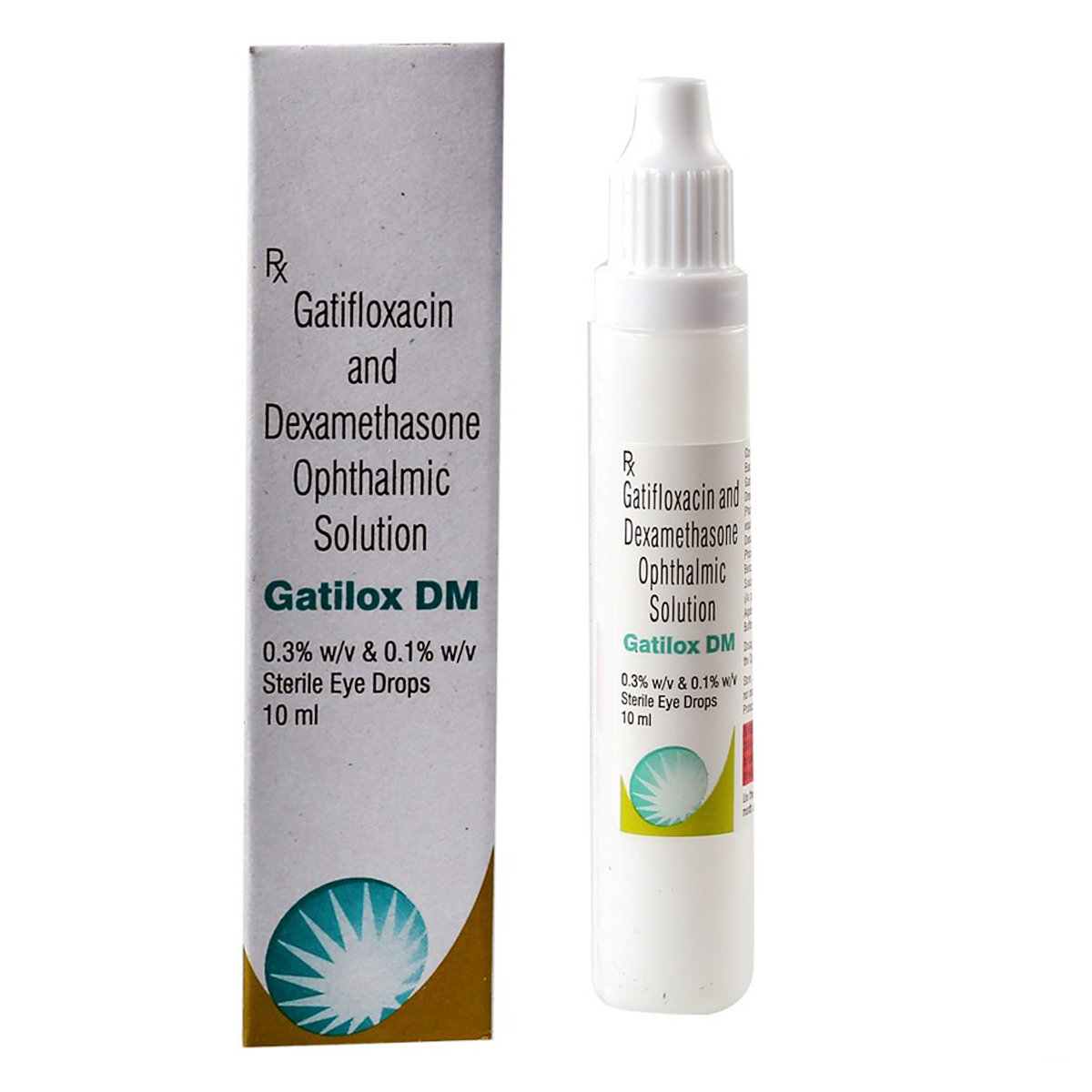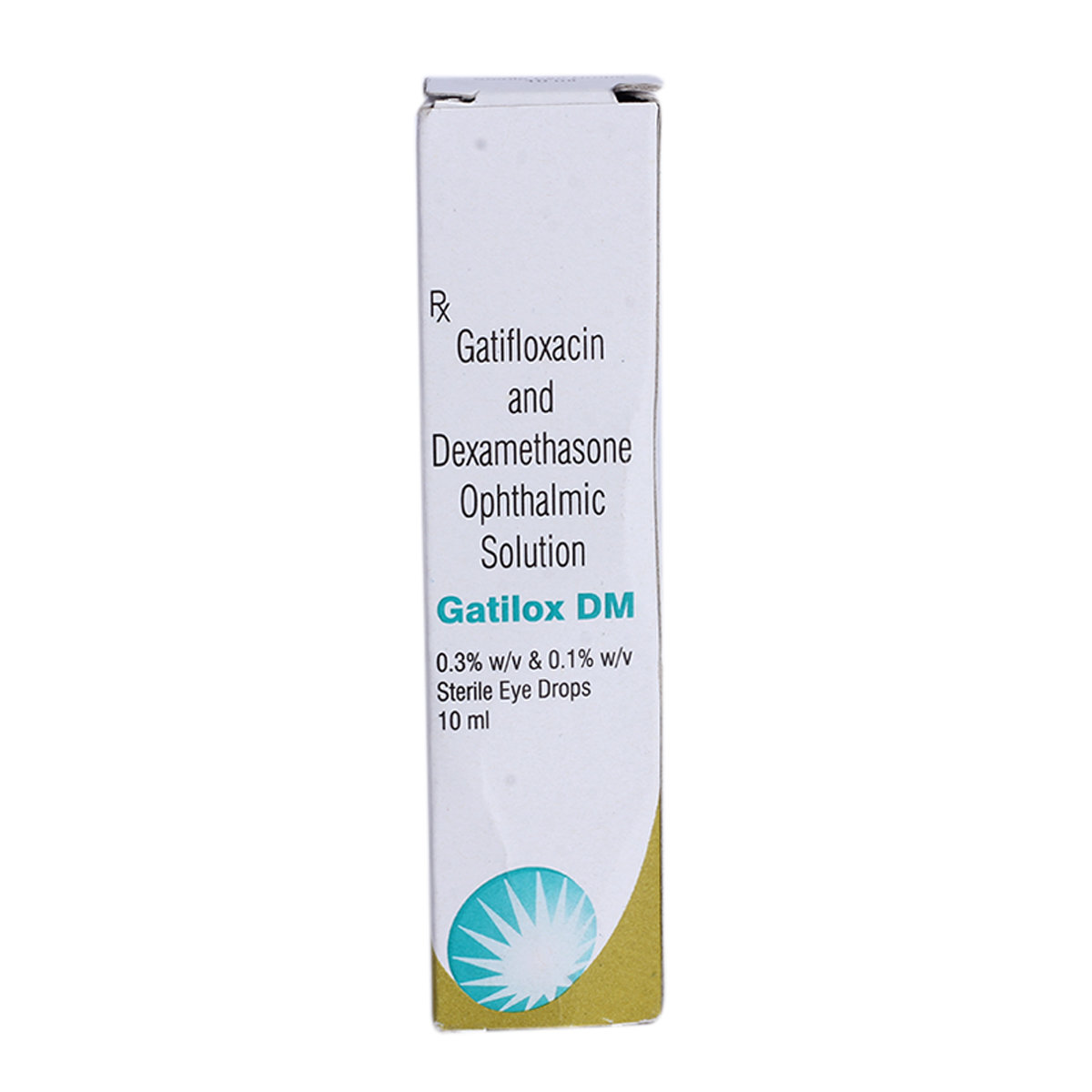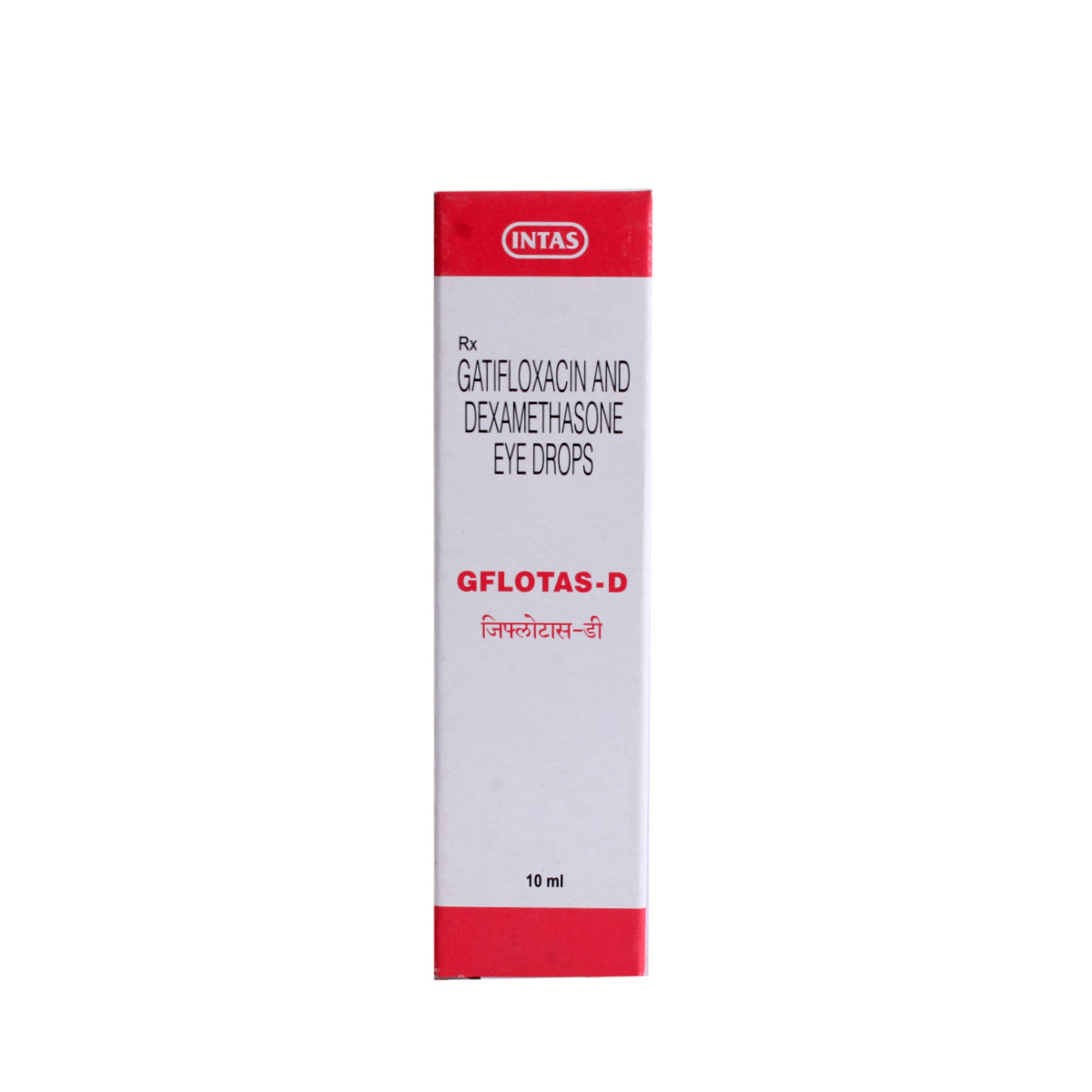Gatifloxacin+dexamethasone
About Gatifloxacin+dexamethasone
Gatifloxacin+dexamethasone belongs to a group of medications called ‘Antibiotics and Corticosteroids’ used in the treatment of bacterial eye infections or eye discomfort, especially in patients who have undergone eye surgeries. It also decreases the risk of eye infections such as conjunctivitis (inflammation of the conjunctiva) and other inflammatory conditions of the eye (cornea, iris, and connective tissue) in postoperative patients.
Gatifloxacin+dexamethasone is a combination of two medicines: Gatifloxacin and Dexamethasone. Gatifloxacin is an antibiotic that acts by interfering with the formation of essential proteins required for bacterial growth. Dexamethasone is a steroid that reduces inflammation and symptoms associated with infection such as redness and irritation. It works by inhibiting the chemicals such as prostaglandins that cause inflammation.
You should take this medicine as prescribed by your doctor. The common side-effects of Gatifloxacin+dexamethasone are red eyes, eye pain, dry eye, watery eyes, and change in taste. Eye drops may also cause temporary blurred vision. In addition, it may cause inflammation of the cornea (clear outer layer of the eye), which is a serious side-effect and may cause vision problems. If any of these side-effects persist, consult your doctor immediately.
Do not take Gatifloxacin+dexamethasone if you are allergic to Gatifloxacin, Dexamethasone, other fluoroquinolone antibiotics, or any contents of it. Before taking Gatifloxacin+dexamethasone, inform your doctor if you are diagnosed with any fungal infections, viral infections such as herpes simplex or varicella, or parasitic infections such as amoebiasis. Do not use Gatifloxacin+dexamethasone if you have tuberculosis, damaged cornea, ulceration, open lesions with incomplete formation of the covering tissue, and increased pressure inside the eye.
Uses of Gatifloxacin+dexamethasone
Medicinal Benefits
Gatifloxacin+dexamethasone is a combination of two medicines: Gatifloxacin and Dexamethasone. Gatifloxacin is a fluoroquinolone and broad-spectrum antibiotic. It can act against both gram-positive and gram-negative bacteria. It acts by interfering with the formation of essential proteins required for bacterial growth. Dexamethasone is a corticosteroid that has anti-inflammatory properties and acts by inhibiting the chemicals such as prostaglandins that cause inflammation. It also reduces symptoms associated with infection such as redness and irritation of the eye and also decreases the risk of infections.
Directions for Use
Storage
Side Effects of Gatifloxacin+dexamethasone
- Red eyes
- Eye pain
- Blurred vision
- Dry eye
- Excessive watery eyes
- Change in taste
- Inflammation of the cornea of the eye (severe)
Drug Warnings
Before taking Gatifloxacin+dexamethasone, inform your doctor if you have vision problems, severe pain in the eye, glaucoma (raised pressure in the eye), eye injury, or have undergone eye surgery or using any other eye drops or eye ointment. Inform your doctor immediately if you notice swelling or weight gain around the trunk or in the face, as it may be a sign of Cushing’s syndrome (high levels of cortisol in the body). Do not use eye drops for longer than recommended by your doctor as it may suppress adrenal gland function and may increase the risk of cataracts (clouding of the eye) and also increases the risk of a second infection.
Drug Interactions
Drug-Drug Interactions: Gatifloxacin+dexamethasone may interact with other quinolone antibiotics (ciprofloxacin, enoxacin, levofloxacin, and moxifloxacin, etc.), an antiviral drug (ritonavir), and a medication used to treat HIV (cobicistat).
Drug-Food Interactions: No interactions found.
Drug-Disease Interactions: Inform your doctor if you have fungal infections, viral infections (herpes simplex or varicella), parasitic infections (amoebiasis), tuberculosis, damaged cornea, ulceration, and glaucoma (increased pressure inside the eye) before using Gatifloxacin+dexamethasone.
Drug-Drug Interactions Checker List:
Safety Advice

Alcohol
cautionThere is limited information on how alcohol consumption affects Gatifloxacin+dexamethasone. Please consult your doctor before starting.

Pregnancy
cautionPlease consult your doctor before using Gatifloxacin+dexamethasone if you are pregnant or planning to conceive.

Breast Feeding
cautionThere is limited information on how Gatifloxacin+dexamethasone affects breastfeeding. Please consult your doctor before taking Gatifloxacin+dexamethasone if you are a breastfeeding mother.

Driving
cautionGatifloxacin+dexamethasone may cause side effects like blurry vision, affecting your driving ability. Do not drive or operate machinery in such cases. Drive only when you are alert and have clear vision.

Liver
safe if prescribedGatifloxacin+dexamethasone can be used for treating eye infections in patients with liver diseases.

Kidney
safe if prescribedGatifloxacin+dexamethasone can be used for treating eye infections in patients with kidney diseases.

Children
cautionGatifloxacin+dexamethasone should be used with caution in children. It is not recommended for use in newborns.
Habit Forming
Diet & Lifestyle Advise
- Sleep for at least six to eight hours to rejuvenate your eyes in a natural way.
- Wash your eyes with clean water at least two to three times a day
- Manage stress, eat healthily, drink plenty of water, exercise regularly, and get plenty of sleep.
- Avoid alcoholic beverages as it can make you dehydrated and affect your sleep. This effect can also affect your body’s ability in fighting off infections.
- Reduce screen time (by avoiding watching tv, or phone) and use sunglasses while going out into the sunlight.
Special Advise
It is advised to contact your doctor if the infection symptoms persist or worsen after two weeks of treatment.
Patients Concern
Disease/Condition Glossary
Bacterial eye infections: Bacterial eye infections are the common eye problems seen in a primary care setting. The common eye problems are conjunctivitis (inflammation of the conjunctiva), stye (bump on the eyelid), and keratitis (inflammation of the cornea). The risk for eye infection is high in post-operative patients or patients who have undergone Lasik, cataract, or other eye surgeries.
FAQs
Gatifloxacin+dexamethasone is a combination of two medicines: Gatifloxacin and Dexamethasone. Gatifloxacin is an antibiotic and stops the growth of bacteria that is causing the infection. Dexamethasone is an anti-inflammatory medicine that reduces eye discomfort and the risk of eye infections.
Avoid prolonged use, as it may cause cataracts (clouding of the eye) and also increases the risk of second infection. Also, do not wear contact lenses while using Gatifloxacin+dexamethasone.
Gatifloxacin+dexamethasone is recommended for use in the eye only. It is not recommended for treating ear problems.
Gatifloxacin+dexamethasone starts working within a few hours after taking this medicine. Its use is usually recommended for 7 days as the condition mostly improves within a week.







